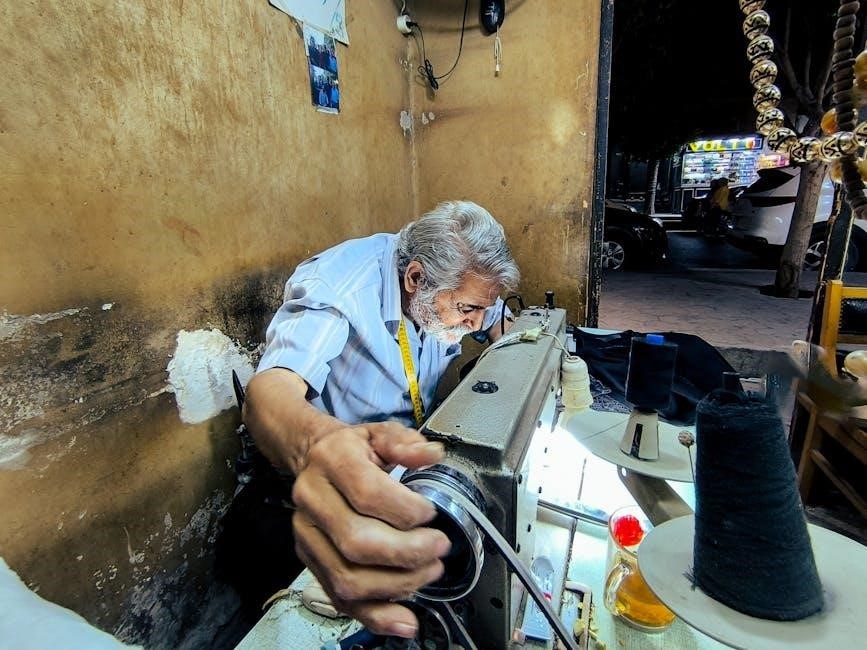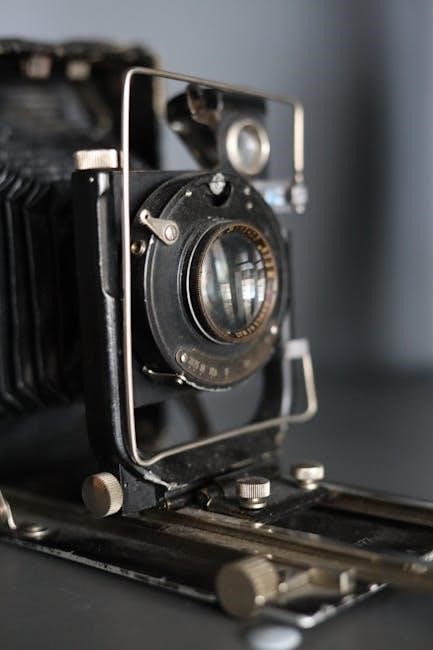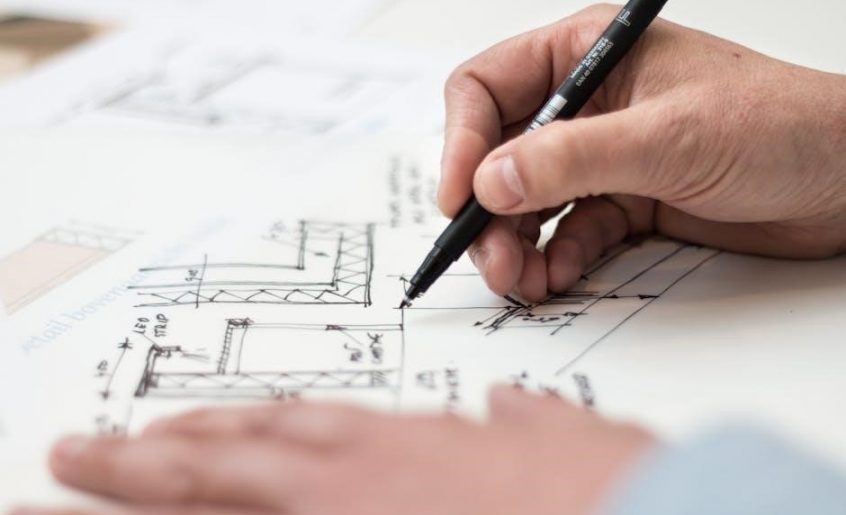Welcome to the BOSS DD-20 Digital Delay manual, your comprehensive guide to unlocking the full potential of this advanced delay pedal.
This manual covers essential features, operation, and troubleshooting, ensuring you get the most out of your device while maintaining optimal performance and sound quality.

1.1 Overview of the BOSS DD-20 Digital Delay
The BOSS DD-20 Digital Delay is a cutting-edge guitar effects pedal designed to deliver high-quality delay sounds with unmatched versatility. Built with advanced digital technology, it offers a wide range of delay options, including standard, reverse, and loop modes. The pedal features a generous 23-second delay time, making it ideal for complex looping and soundscaping. Its intuitive interface includes essential controls such as E.Level, Feedback, and Time knobs, allowing for precise tone shaping. Additionally, the DD-20 supports external control via the Tap Tempo footswitch and MIDI compatibility, enhancing its functionality for live performances and studio use. With its robust construction and user-friendly design, the DD-20 is a must-have tool for musicians seeking professional-grade delay effects.
1.2 Importance of Reading the Manual
Reading the BOSS DD-20 manual is crucial for understanding the unit’s safe operation, optimal performance, and full feature set. It provides essential safety precautions, ensuring proper handling and preventing potential damage. The manual explains how to navigate the pedal’s interface, configure settings, and utilize advanced features like delay modes and MIDI compatibility. It also covers troubleshooting common issues and performing routine maintenance. By following the manual, users can unlock the DD-20’s capabilities, such as creating custom presets and synchronizing delays with external devices. Detailed instructions guide users through initialization, updating firmware, and managing power supply. Ignoring the manual may lead to suboptimal performance or unintended damage. Always refer to the manual for clear, manufacturer-recommended guidance to enhance your musical experience and prolong the pedal’s lifespan.
1.3 Safety Precautions and Handling
Proper handling and adherence to safety precautions are essential to ensure the longevity and optimal performance of the BOSS DD-20. Always operate the unit in a well-ventilated area and avoid exposure to extreme temperatures or moisture. Use the provided power supply to prevent damage from incorrect voltage. Never touch electrical components with wet hands, and avoid dropping or subjecting the pedal to physical stress. Clean the device with a soft, dry cloth, avoiding harsh chemicals that could damage the finish or electronics. Store the DD-20 in a protective case when not in use to prevent scratches or damage. Following these guidelines will help maintain the pedal’s functionality and ensure safe operation for years to come.

Key Features of the BOSS DD-20
The BOSS DD-20 offers advanced digital delay technology, pristine sound quality, and versatile delay modes. It features external control options for enhanced functionality and customizable settings to suit various musical needs.
2.1 Digital Delay Technology
The BOSS DD-20 employs cutting-edge digital delay technology, delivering crystal-clear, high-quality sound with precise control over delay effects. Its advanced processing ensures minimal noise and rich tonal integrity, making it ideal for professional and studio use. The pedal features a robust 23-second delay capacity, allowing for extensive looping and creative sound design. With its intuitive interface, users can easily adjust delay time, feedback, and level settings to achieve desired effects. The digital delay technology also supports seamless integration with external controllers, offering enhanced flexibility for live performances. This innovative approach ensures the DD-20 stands out as a versatile and reliable tool for musicians seeking premium delay effects.
2.2 Delay Modes and Their Functions
The BOSS DD-20 offers a variety of delay modes to cater to different musical needs. The Standard Delay mode provides a straightforward echo effect, ideal for rhythm and lead playing. Reverse Delay mode flips the audio signal, creating unique, backward-playing sounds that add depth to recordings and live performances. The SOS (Simple Loop) mode simplifies loop creation, allowing quick and easy recording of phrases for on-the-spot inspiration. Each mode is designed to enhance creativity and versatility, giving musicians the tools to craft dynamic and engaging soundscapes. These modes ensure the DD-20 adapts to various genres and playing styles, making it a versatile choice for both studio and stage use.
2.3 External Control Options
The BOSS DD-20 provides versatile external control options to enhance your performance and customization. An external footswitch, such as the FS-5U, can be connected to control functions like tap tempo or bypass, offering hands-free operation during live gigs. Additionally, the pedal supports MIDI compatibility, allowing integration with MIDI controllers for advanced parameter control and synchronization with other MIDI-enabled devices. This feature-rich connectivity ensures seamless integration into complex setups, making the DD-20 a highly adaptable tool for both studio and stage environments. These external control options empower musicians to streamline their workflow and unlock new creative possibilities with ease.

Understanding the Delay Modes
This section explores the BOSS DD-20’s versatile delay modes, including Standard, Reverse, and SOS (Simple Loop), each offering unique sonic possibilities for musicians to explore and customize their sound.
3.1 Standard Delay Mode
The Standard Delay Mode on the BOSS DD-20 offers a straightforward and versatile delay effect, ideal for a wide range of musical applications. This mode allows you to set the delay time, feedback, and level to create a clear and precise echo effect. With a maximum delay time of 23 seconds, it provides ample flexibility for both subtle repetitions and extensive soundscapes. The Standard Mode is perfect for live performances and studio recordings, offering a reliable foundation for any guitarist or musician seeking high-quality delay effects. Its intuitive controls make it easy to customize the sound to suit your playing style, ensuring a professional-grade performance every time you use it.
3.2 Reverse Delay Mode
The Reverse Delay Mode on the BOSS DD-20 allows you to create unique and captivating sound effects by playing your audio signal in reverse. This mode is perfect for experimental and creative musicians, offering a distinctive echo that can add depth to your music. To activate Reverse Delay, navigate through the mode selection menu and choose the reverse option. Once enabled, you can adjust settings like delay time, feedback, and level to tailor the effect to your preference. The reversed echoes can be subtle or pronounced, depending on your adjustments. This mode is particularly useful for creating intriguing intros, outros, or mid-song transitions, making it a standout feature for those seeking to push the boundaries of traditional delay effects.
3.3 SOS (Simple Loop) Mode
The SOS (Simple Loop) Mode on the BOSS DD-20 is designed for easy and intuitive looping. This mode allows you to record, play back, and overdub loops with minimal complexity, making it ideal for quick idea capture or live performances. To engage SOS Mode, press and hold the pedal until the SOS indicator lights up. You can then record your loop by pressing the pedal once and overdub by pressing it again. The DD-20 supports up to 23 seconds of loop time, providing ample space for creative expression. Adjustments like loop level and feedback can be made to fine-tune your sound. This feature is perfect for musicians seeking a straightforward looping experience without the need for advanced settings, ensuring a seamless and efficient workflow during practice or on stage.

Customization and Control
Customization and control are at the heart of the BOSS DD-20, offering extensive options to tailor your delay effects. With memory presets, tap tempo, and manual mode, you can easily create and adjust unique sounds to suit your musical needs, ensuring a personalized and dynamic performance experience.
4.1 Memory Presets and Their Usage
The BOSS DD-20 offers four memory presets, allowing you to store and recall your favorite delay settings instantly. These presets are easily accessible via the Memory Pedal, enabling seamless transitions during live performances. To store a setting, simply select your desired delay configuration and save it to one of the four memory slots. This feature is particularly useful for musicians who need quick access to multiple delay effects without adjusting knobs mid-performance. Additionally, the presets can be used to maintain consistency across different songs or settings in both live and studio environments. By leveraging memory presets, you can enhance your creativity and efficiency, ensuring a smooth and professional musical experience.
4.2 Tap Tempo Function
The Tap Tempo function on the BOSS DD-20 allows you to manually set the delay time by tapping a button or external pedal, providing precise synchronization with your music’s tempo. This feature is accessed via the Memory Pedal, offering a dynamic way to adjust delay times in real-time. It’s especially useful during live performances, where tempo changes are frequent. The Tap Tempo function ensures your delay effects stay in sync with your playing, enhancing both creativity and professionalism. By enabling this feature, you can achieve a more natural and cohesive sound, making it an essential tool for musicians seeking versatility and control over their delay effects.
4.3 Manual Mode for Direct Control
The Manual Mode on the BOSS DD-20 provides direct access to core delay parameters, allowing for real-time adjustments without relying on memory presets. Engaging Manual Mode enables you to tweak delay time, feedback, and level instantly, offering precise control over your sound. This mode is ideal for live performances, where quick, dynamic changes are essential. By pressing and holding the Memory Pedal, you can activate Manual Mode, ensuring seamless transitions and customized delay effects. The ability to fine-tune settings manually enhances your creative freedom, making it a powerful tool for musicians seeking direct command over their delay effects during performances or recording sessions. This feature ensures that your sound remains adaptable and responsive to your musical needs.

Maintenance and Upkeep
Regularly clean the pedal and ensure proper power supply management to maintain optimal performance. Update firmware periodically and refer to the manual for detailed upkeep instructions.
5.1 Cleaning the Pedal
Proper cleaning of the BOSS DD-20 pedal is essential to maintain its functionality and appearance. Use a soft, dry cloth to wipe down the exterior, removing dirt and dust that may accumulate. For more stubborn stains or grime, lightly dampen the cloth with water, but avoid excessive moisture to prevent damage to the electronics. Never use harsh chemicals or abrasive cleaners, as they may harm the pedal’s finish or components. Regular cleaning ensures smooth operation of the footswitch and preserves the pedal’s longevity. Additionally, clean the input/output jacks with a dry cotton swab to maintain optimal audio signal quality. Always ensure the pedal is dry before powering it on to prevent any electrical issues.

5.2 Updating the Firmware
Updating the firmware of your BOSS DD-20 ensures you have the latest features, improvements, and bug fixes. Visit the official Roland website to download the most recent firmware version. Use a compatible USB cable to connect the pedal to your computer and follow the on-screen instructions provided with the update utility. Before starting, ensure the pedal is in “Update” mode, as specified in the manual. Do not disconnect the pedal or turn it off during the update process, as this could cause permanent damage. Once the update is complete, restart the pedal to apply the changes. Regular firmware updates help maintain optimal performance and compatibility with other devices.
5.3 Power Supply Management
Proper power supply management is crucial for the BOSS DD-20’s optimal performance. Use the recommended PSA-100 power supply unit to ensure stable power delivery and prevent noise interference. Avoid using generic adapters, as they may cause instability or damage. Always unplug the pedal when not in use to conserve energy and prevent wear on internal components. If using a power distribution board, ensure it is high-quality and designed for musical equipment. Keep the pedal away from water and humid environments to avoid electrical hazards. For extended storage, disconnect the power supply to maintain battery health and prevent corrosion. Regularly inspect the power cable for damage and replace it if necessary. Proper power management ensures reliable operation and preserves the longevity of your BOSS DD-20.

Troubleshooting Common Issues
Welcome to the troubleshooting section, designed to help identify and resolve common issues with your BOSS DD-20. This guide covers various problems, from delay malfunctions to noise interference, and provides practical solutions to ensure optimal performance and functionality.
6.1 Delay Not Working Properly
If the delay function on your BOSS DD-20 is not working as expected, there are several potential causes to investigate. First, ensure the power supply is stable and meets the unit’s requirements. Check the input and output connections for proper wiring and damage. Verify that the output mode is set correctly, as improper settings can disable the delay effect. Additionally, ensure the firmware is up to date, as outdated software may cause functionality issues. If the problem persists, reset the unit to its factory settings or perform a factory reset. Consult the manual for detailed troubleshooting steps and guidelines to restore your delay function to optimal performance.
6.2 Distortion or Noise Problems
If you experience distortion or noise while using your BOSS DD-20, several factors could be contributing to the issue. First, check the input levels to ensure they are not too high, as excessive gain can cause distortion. Inspect the input and output cables for damage or interference, and consider using high-quality, shielded cables. Additionally, verify that the power supply meets the unit’s requirements, as low voltage or a faulty adapter can introduce noise. If the problem persists, review the output mode settings to ensure they are configured correctly. Resetting the unit to factory settings or updating the firmware may also resolve the issue. For persistent problems, consult the manual or contact BOSS support for further assistance.
6.3 Loop Function Malfunction
If the loop function on your BOSS DD-20 is not working correctly, start by ensuring the SOS (Simple Loop) mode is properly engaged. Check that the footswitch is functioning correctly for recording and playback. Verify that the loop level is set appropriately to avoid signal loss or distortion. If loops are not recording, ensure the input signal is strong and free from interference; Resetting the unit to factory settings may resolve software-related issues. Additionally, ensure all firmware updates are installed, as outdated software can cause looping malfunctions. If the problem persists, consult the manual for detailed troubleshooting steps or contact BOSS support for professional assistance. Proper maintenance and regular updates can help prevent such issues and ensure smooth operation of the loop function.

Advanced Features and Settings
The BOSS DD-20 offers advanced features like stereo output mode, MIDI compatibility, and bypass options, allowing for enhanced customization and seamless integration into complex musical setups and systems.
7.1 Stereo Output Mode
The BOSS DD-20’s Stereo Output Mode enables wide, immersive sound by splitting the delay signal into left and right channels. This feature enhances spatial audio reproduction, making it ideal for live performances and studio recordings. By activating this mode, users can achieve a richer, more dynamic soundstage. The stereo output ensures that delay effects are distributed evenly across both channels, creating a natural and engaging listening experience. This mode is particularly useful when connecting the DD-20 to stereo amplifiers, mixers, or recording interfaces. Properly utilizing the Stereo Output Mode requires navigating to the output settings in the menu, selecting the stereo option, and saving the configuration for optimal performance. This advanced feature underscores the DD-20’s versatility in professional audio applications.
7.2 Bypass Modes
The BOSS DD-20 offers multiple bypass modes, allowing users to tailor how the pedal interacts with their signal chain. The Buffered Bypass mode ensures a stable signal even with long cable runs, while True Bypass mode provides a direct, unaltered signal when the effect is off. Additionally, the pedal features a Trails mode, which allows delay effects to naturally decay even after bypassing. This is particularly useful for maintaining a smooth transition during live performances. Users can select their preferred bypass mode via the menu, ensuring compatibility with their specific tone and setup. Properly configuring the bypass mode enhances the pedal’s versatility, making it suitable for both studio and live environments. This feature underscores the DD-20’s adaptability to various musical and technical requirements.
7.3 MIDI Compatibility
The BOSS DD-20 is equipped with MIDI compatibility, enabling seamless integration with external MIDI controllers and devices. This feature allows users to control various functions such as program changes, tempo synchronization, and parameter adjustments via MIDI signals. By connecting a MIDI controller, musicians can access and switch between presets, adjust delay settings, and synchronize effects with their performance. This functionality is particularly useful for live performances and studio setups, where precise control and coordination are essential. The MIDI compatibility enhances the pedal’s versatility, making it a powerful tool for advanced users seeking to streamline their workflow and expand their creative possibilities. This feature ensures the DD-20 remains a highly adaptable and professional-grade digital delay pedal.

8.1 Final Tips for Optimal Use
To maximize your experience with the BOSS DD-20, regular maintenance and thoughtful usage are key. Always clean the pedal to prevent dust buildup and ensure smooth operation; Keep your firmware updated to access the latest features and improvements. Use a high-quality power supply to maintain consistent performance and avoid noise issues.
Experiment with delay modes and settings to find the perfect tone for your music. For live performances, consider using the Tap Tempo function for precise control over delay times. If you encounter any issues, refer to the troubleshooting section or reset the unit to its factory settings for a fresh start.
By following these guidelines and exploring the pedal’s capabilities, you’ll unlock the full creative potential of the BOSS DD-20 and enjoy years of reliable service. Happy playing!
